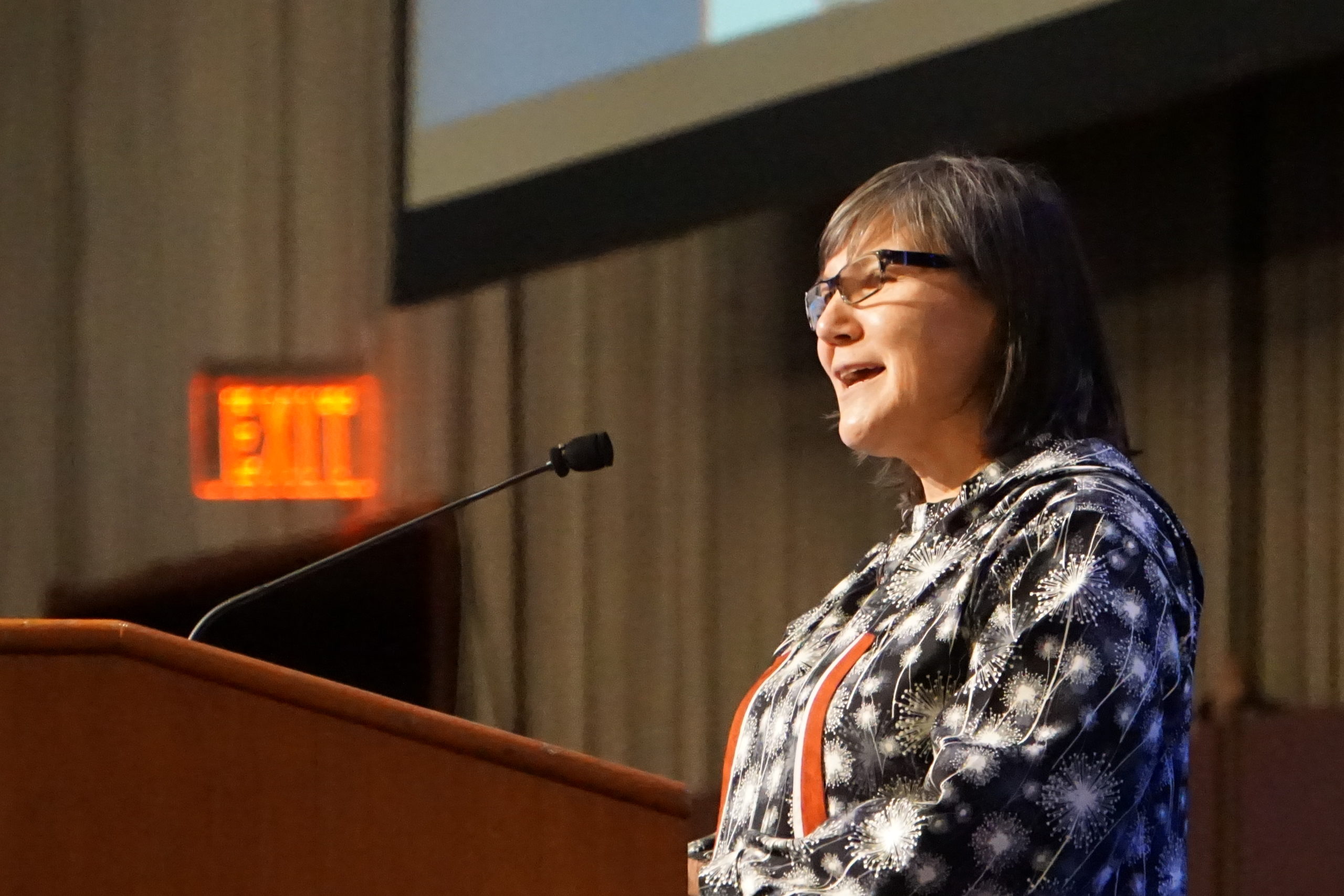With a new Indigenous leader, an Alaska university transitions to tribal status
Former Alaska Lt. Gov. Valerie Davidson will lead the university's transition.

An Alaska Native leader will be the new president of Alaska Pacific University.
Valerie Davidson, the former commissioner of Alaska’s Department of Health and Social Services who also served briefly as the state’s lieutenant governor, has been hired to lead the small liberal arts university in Anchorage. Her tenure is set to start on April 25.
Alaska Pacific University is transitioning into a status as a tribal university, a plan that emerged during a recent period of financial troubles.
It will take several years to reach that goal, said Davidson, who is Yup’ik and from southwestern Alaska. Certification as a tribal university requires that at least half the enrolled students are Native, she said.
But in the interim, APU is beefing up its Native-focused curriculum and programs, as outlined in the institution’s 2018 strategic plan.
For now, Alaska has only one tribal college: Ilisagvik College in Utqiagvik, the nation’s northernmost community.
APU’s goal of becoming a tribal university in the future and the current emphasis on Native heritage, culture and knowledge hearkens back to the university’s founding, Davidson said.
It was established by Peter Gordon Gould, an Unangax from the Aleutian island of Unga.
Educated in Pennsylvania and upstate New York, Gould became the first Alaska Native to be an ordained United Methodist Church minister. He started what was initially called Alaska Methodist University, which opened in 1960. The university has a special mission to serve Alaska Natives.
“We really have come full circle on Peter Gordon Gould’s vision to educate Alaska leaders, with a focus on Alaska’s Indigenous people,” Davidson said.
The university in 2016 entered a partnership with the Alaska Native Tribal Health Consortium. ANTHC’s midtown campus, which borders APU, houses the headquarters of the Arctic Investigations Program of the Centers for Disease Control, along with the Alaska Native Medical Center and other medical establishments.
The partnership with ANTHC strengthens each organization and creates new opportunities for study, research and careers in circumpolar health, Davidson said.
ANTHC has “a really bold vision,” she said. The goal: that “Alaska Native people are the healthiest people in the world.”
APU has a role to play in achieving that vision, she said. “We see students pursuing higher education as one of the best ways to ensure that.”
Another new partnership reaches across international borders. In October, APU joined the University of the Arctic, a consortium of more than 200 northern or northern-focused institutions. Also joining UArctic in October was the Anchorage Museum.
One way to reach out to students across the North, including Native students, is to offer a broad range of telecommuting options, Davidson said.
APU had already started a distance-learning program, Davidson said. Now, in the age of COVID-19 and shuttered schools and campuses around the world, the online system is getting tested a lot by instructors as well as students as APU’s classes and meetings have resumed by teleconference, she said.
“It’s been really eye-opening for us to experience ourselves what are students are experiencing,” she said.